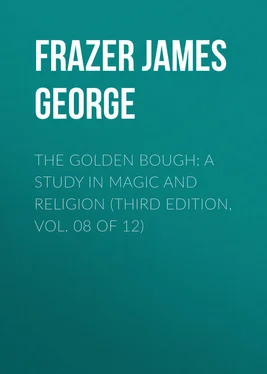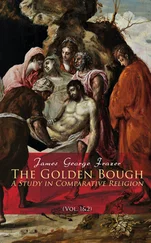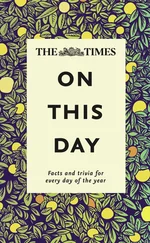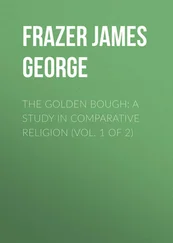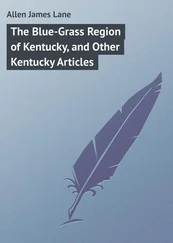James Frazer - The Golden Bough - A Study in Magic and Religion (Third Edition, Vol. 08 of 12)
Здесь есть возможность читать онлайн «James Frazer - The Golden Bough - A Study in Magic and Religion (Third Edition, Vol. 08 of 12)» — ознакомительный отрывок электронной книги совершенно бесплатно, а после прочтения отрывка купить полную версию. В некоторых случаях можно слушать аудио, скачать через торрент в формате fb2 и присутствует краткое содержание. Жанр: foreign_religion, foreign_antique, foreign_prose, на английском языке. Описание произведения, (предисловие) а так же отзывы посетителей доступны на портале библиотеки ЛибКат.
- Название:The Golden Bough: A Study in Magic and Religion (Third Edition, Vol. 08 of 12)
- Автор:
- Жанр:
- Год:неизвестен
- ISBN:нет данных
- Рейтинг книги:4 / 5. Голосов: 1
-
Избранное:Добавить в избранное
- Отзывы:
-
Ваша оценка:
- 80
- 1
- 2
- 3
- 4
- 5
The Golden Bough: A Study in Magic and Religion (Third Edition, Vol. 08 of 12): краткое содержание, описание и аннотация
Предлагаем к чтению аннотацию, описание, краткое содержание или предисловие (зависит от того, что написал сам автор книги «The Golden Bough: A Study in Magic and Religion (Third Edition, Vol. 08 of 12)»). Если вы не нашли необходимую информацию о книге — напишите в комментариях, мы постараемся отыскать её.
The Golden Bough: A Study in Magic and Religion (Third Edition, Vol. 08 of 12) — читать онлайн ознакомительный отрывок
Ниже представлен текст книги, разбитый по страницам. Система сохранения места последней прочитанной страницы, позволяет с удобством читать онлайн бесплатно книгу «The Golden Bough: A Study in Magic and Religion (Third Edition, Vol. 08 of 12)», без необходимости каждый раз заново искать на чём Вы остановились. Поставьте закладку, и сможете в любой момент перейти на страницу, на которой закончили чтение.
Интервал:
Закладка:
To explain the rude and ancient ritual of the Thesmophoria [pg 019] the following legend was told. At the moment when Pluto carried off Persephone, a swineherd called Eubuleus chanced to be herding his swine on the spot, and his herd was engulfed in the chasm down which Pluto vanished with Persephone. Accordingly at the Thesmophoria pigs were annually thrown into caverns to commemorate the disappearance of the swine of Eubuleus. 60 60 Scholia in Lucianum , ed. H. Rabe, pp. 275 sq.
It follows from this that the casting of the pigs into the vaults at the Thesmophoria formed part of the dramatic representation of Persephone's descent into the lower world; and as no image of Persephone appears to have been thrown in, we may infer that the descent of the pigs was not so much an accompaniment of her descent as the descent itself, in short, that the pigs were Persephone. Afterwards when Persephone or Demeter (for the two are equivalent) took on human form, a reason had to be found for the custom of throwing pigs into caverns at her festival; and this was done by saying that when Pluto carried off Persephone, there happened to be some swine browsing near, which were swallowed up along with her. The story is obviously a forced and awkward attempt to bridge over the gulf between the old conception of the corn-spirit as a pig and the new conception of her as an anthropomorphic goddess. A trace of the older conception survived in the legend that when the sad mother was searching for traces of the vanished Persephone, the footprints of the lost one were obliterated by the footprints of a pig; 61 61 Ovid, Fasti , iv. 461-466, upon which Gierig remarks, “ Sues melius poeta omisisset in hac narratione .” Such is the wisdom of the commentator.
originally, we may conjecture, the footprints of the pig were the footprints of Persephone and of Demeter herself. A consciousness of the intimate connexion of the pig with the corn lurks in the legend that the swineherd Eubuleus was a brother of Triptolemus, to whom Demeter first imparted the secret of the corn. Indeed, according to one version of the story, Eubuleus himself received, jointly with his brother Triptolemus, the gift of the corn from Demeter as a reward for revealing to her the fate of Persephone. 62 62 Pausanias, i. 14. 3.
Further, it is to be noted that at the Thesmophoria [pg 020] the women appear to have eaten swine's flesh. 63 63 Scholiast on Aristophanes, Frogs , 338.
The meal, if I am right, must have been a solemn sacrament or communion, the worshippers partaking of the body of the god.
As thus explained, the Thesmophoria has its analogies in the folk-customs of Northern Europe which have been already described. Just as at the Thesmophoria – an autumn festival in honour of the corn-goddess – swine's flesh was partly eaten, partly kept in caverns till the following year, when it was taken up to be sown with the seed-corn in the fields for the purpose of securing a good crop; so in the neighbourhood of Grenoble the goat killed on the harvest-field is partly eaten at the harvest-supper, partly pickled and kept till the next harvest; 64 64 Above, vol. i. p. 285.
so at Pouilly the ox killed on the harvest-field is partly eaten by the harvesters, partly pickled and kept till the first day of sowing in spring, 65 65 Above, vol. i. p. 290.
probably to be then mixed with the seed, or eaten by the ploughmen, or both; so at Udvarhely the feathers of the cock which is killed in the last sheaf at harvest are kept till spring, and then sown with the seed on the field; 66 66 Above, vol. i. p. 278.
so in Hesse and Meiningen the flesh of pigs is eaten on Ash Wednesday or Candlemas, and the bones are kept till sowing-time, when they are put into the field sown or mixed with the seed in the bag; 67 67 Above, vol. i. p. 300.
so, lastly, the corn from the last sheaf is kept till Christmas, made into the Yule Boar, and afterwards broken and mixed with the seed-corn at sowing in spring. 68 68 Above, vol. i. pp. 300 sq.
Thus, to put it generally, the corn-spirit is killed in animal form in autumn; part of his flesh is eaten as a sacrament by his worshippers; and part of it is kept till next sowing-time or harvest as a pledge and security for the continuance or renewal of the corn-spirit's energies. Whether in the interval between autumn and spring he is conceived as dead, or whether, like the ox in the bouphonia , he is supposed to come to life again immediately after being killed, is not clear. At the Thesmophoria, according to Clement and Pausanias, as emended by Lobeck, 69 69 In Clement of Alexandria, Protrept. ii. 17, for μεγαρίζοντες χοίρους ἐκβάλλουσι Lobeck ( Aglaophamus , p. 831) would read μεγάροις ζῶντας χοίρους ἐμβάλλουσι. For his emendation of Pausanias, see above, p. 18 note 1.
the pigs [pg 021] were thrown in alive, and were supposed to reappear at the festival of the following year. Here, therefore, if we accept Lobeck's emendations, the corn-spirit is conceived as alive throughout the year; he lives and works under ground, but is brought up each autumn to be renewed and then replaced in his subterranean abode. 70 70 It is worth nothing that in Crete, which was an ancient seat of Demeter worship (see above, vol. i. p. 131), the pig was esteemed very sacred and was not eaten (Athenaeus, ix. 18, pp. 375 f-376 a). This would not exclude the possibility of its being eaten sacramentally, as at the Thesmophoria.
If persons of fastidious taste should object that the Greeks never could have conceived Demeter and Persephone to be embodied in the form of pigs, it may be answered that in the cave of Phigalia in Arcadia the Black Demeter was portrayed with the head and mane of a horse on the body of a woman. 71 71 Pausanias, viii. 42.
Between the portrait of a goddess as a pig, and the portrait of her as a woman with a horse's head, there is little to choose in respect of barbarism. The legend told of the Phigalian Demeter indicates that the horse was one of the animal forms assumed in ancient Greece, as in modern Europe, 72 72 Above, vol. i. pp. 292 sqq.
by the corn-spirit. It was said that in her search for her daughter, Demeter assumed the form of a mare to escape the addresses of Poseidon, and that, offended at his importunity, she withdrew in dudgeon to a cave not far from Phigalia in the highlands of Western Arcadia. The very cavern, now turned into a little Christian chapel with its holy pictures, is still shewn to the curious traveller far down the side of that profound ravine through which the brawling Neda winds under overhanging woods to the sea. There, robed in black, she tarried so long that the fruits of the earth were perishing, and mankind would have died of famine if Pan had not soothed the angry goddess and persuaded her to quit the cave. In memory of this event, the Phigalians set up an image of the Black Demeter in the cave; it represented a woman dressed in a long robe, with the head and mane of a horse. 73 73 Pausanias, viii. 25 and 42. At the sanctuary of the Mistress (that is, of Persephone) in Arcadia many terracotta statuettes have been found which represent draped women with the heads of cows or sheep. They are probably votive images of Demeter or Persephone, for the ritual of the sanctuary prescribed the offering of images (Dittenberger, Sylloge Inscriptionum Graecarum , 2 No. 939, vol. ii. pp. 803 sq. ). See P. Perdrizet, “Terres-cuites de Lycosoura, et mythologie arcadienne,” Bulletin de Correspondance Hellénique , xxiii. (1899) p. 635; M. P. Nilsson, Griechische Feste (Leipsic, 1906), pp. 347 sq. On the Phigalian Demeter, see W. Mannhardt, Mythologische Forschungen , pp. 244 sqq. I well remember how on a summer afternoon I sat at the mouth of the shallow cave, watching the play of sunshine on the lofty wooded sides of the ravine and listening to the murmur of the stream.
The Black Demeter, in whose absence the fruits [pg 022] of the earth perish, is plainly a mythical expression for the bare wintry earth stripped of its summer mantle of green.
Интервал:
Закладка:
Похожие книги на «The Golden Bough: A Study in Magic and Religion (Third Edition, Vol. 08 of 12)»
Представляем Вашему вниманию похожие книги на «The Golden Bough: A Study in Magic and Religion (Third Edition, Vol. 08 of 12)» списком для выбора. Мы отобрали схожую по названию и смыслу литературу в надежде предоставить читателям больше вариантов отыскать новые, интересные, ещё непрочитанные произведения.
Обсуждение, отзывы о книге «The Golden Bough: A Study in Magic and Religion (Third Edition, Vol. 08 of 12)» и просто собственные мнения читателей. Оставьте ваши комментарии, напишите, что Вы думаете о произведении, его смысле или главных героях. Укажите что конкретно понравилось, а что нет, и почему Вы так считаете.
